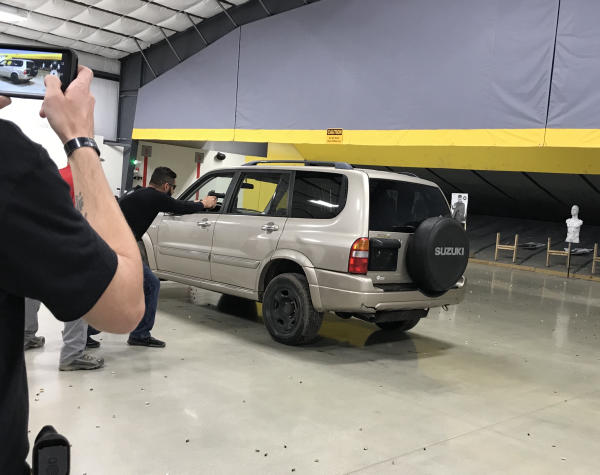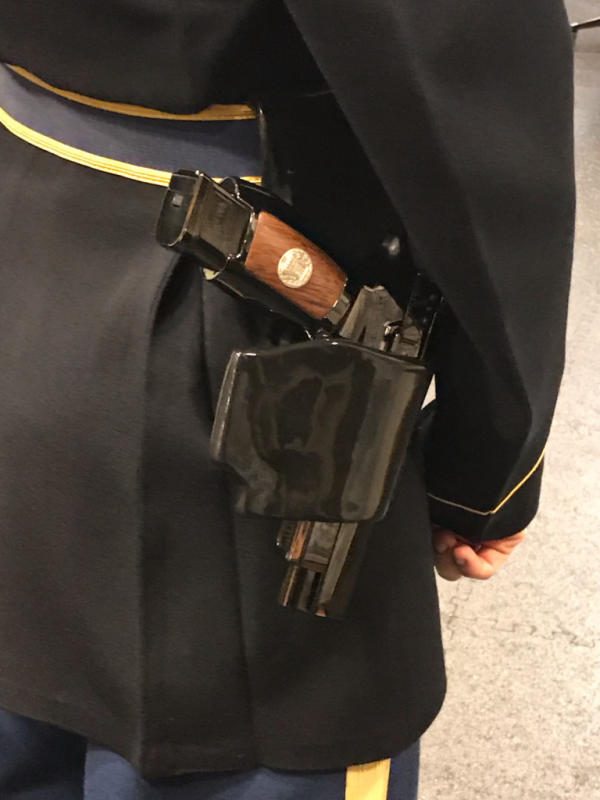As SIG SAUER’s Chalk 07-18 wrapped up last night, it was obvious that the event was quite a hit with the 30 or so lucky attendees. Despite some uncooperative weather, everyone who had the opportunity to spend some quality time with the company, its employees and products seemed to be leaving with the same impression: SIG is out to dominate the industry.
As various product experts talked with us about SIG’s product lines, their pride in the end result of their cutting-edge manufacturing processes was obvious. As we all moved from Wednesday’s square ranges to more practical applications yesterday, the instructors from the SIG Academy were quick to tell us not to baby the equipment. As one instructor reminded me, “this stuff’s made for real-life, not games. Drop the magazines, slingshot the pistol slides, run the bolts with authority, it’s not going to take it personally.”
The theory behind the not-insignificant investment in time, energy and money is simple: to hammer home SIG’s new tag line: Never Settle.
Never settling, according to SIG means never letting down on quality for existing products, nor cutting corners when it comes to research and development. And while we were here, we were told about, but not shown, SIG’s newest products. Most are already in the pipeline, although we were asked not to give specifics. Without betraying the confidence, there will be some surprises in ammunition and new guns rolled out to consumers at SHOT Show 2019. NAGW attendees will be seeing some of those new products as well when it kicks off next week in Pittsburgh, Pennsylvania.
In the meantime, Chalk attendees spent the entire day yesterday putting everything from SIG’s diminutive P365 pistol to their long range precision rifles, scopes, and rangefinders through their paces. Like many of my companions, I hadn’t spent much time on the majority of the equipment.

Working the square range is one way to "knock the rust off shooting skills." Bringing in a vehicle and teaching movement from cover and concealment while engaging multiple targets gets you out of the square mentality and into the combative mindset. Jim Shepherd/OWDN photo.
After firing hundred rounds of SIG’s rifle and pistol ammunition, I’d have to say that there’s a lot to like about the new products. The quality of their optics, for example, is markedly higher than their initial offerings. And their new higher-magnification scopes combine durability, high tech features and great light transmission with affordability. Not cheap, but not out of the reach of most shooters looking to upgrade their optics without breaking their family budgets.
That’s optic improvement is the result of SIG’s making the decision to move away from “branded products” and going entirely to gear they’ve manufactured. That doesn’t mean no supplier’s parts, it does mean the supplier parts are integrated into product SIG’s manufacturing. And all the parts are put through rigorous testing before they head out the door to customers.
Chalk attendees came from seventeen different states, and worked for big distributors, buying groups and individual gun shops. That’s not unintentional. The idea was give salespeople across the spectrum experience with SIG’s products, processes and corporate philosophy.
It’s apparently succeeded to the point that SIG’s Senior VP of Commercial Sales, Tom Taylor, told attendees that the Chalk program will continue next year. It’s going through some changes, but the results SIG’s seen as a result of their turning salespeople into experienced users are hard to argue.

While the SIG Chalk was underway in New Hampshire there was a solemn ceremony underway in Washington D.C. At 10 a.m. Eastern time, members of the Old Guard, the guardians of the Tomb of the Unknown Soldier (above) made a historic transition, moving to SIG M17 pistols created especially for them. (below) Photos with permission.

In my job, I’m fortunate to have many of these kinds of opportunities over the course of the year. Over the past two weeks, for example, I’ve seen the latest-and-greatest from Remington’s myriad of companies and SIG Sauer. But this week’s the first time I’ve shared the experience with non-media types.
The impact on a group of experienced salespeople makes me wonder if more manufacturers shouldn’t consider these kinds of events. They’re not inexpensive, but training good salespeople is an investment every manufacturer should encourage and every good retailer should consider an investment, not a cost.
—Jim Shepherd